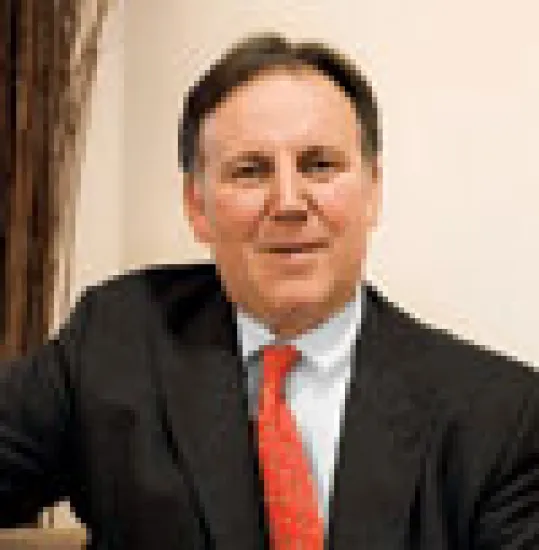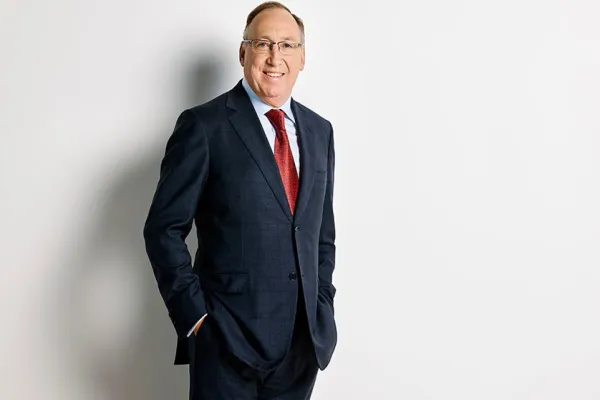Stanley Fink remains a hot commodity. Although the former deputy chairman and CEO of London’s alternative-investment firm Man Group — the biggest publicly traded fund of hedge funds — made a determined effort to retire this past summer, his friends wouldn’t let him. Barraged with job offers from hedge fund firms large and small, Fink, 51, abruptly abandoned his plans to become a full-time philanthropist and threw himself back into the corporate fray just as the financial crisis took a turn for the worse.
In mid-September, Fink resurfaced as the newly minted CEO of London-based International Standard Asset Management, a commodities trading firm that specializes in gold and global macro strategies.
CEO is a familiar title for Fink, who wore it for seven of his 21 years at Man, but the scale of ISAM’s business is a far cry from that of the global operation he left behind. That suits the soft-spoken, avuncular chief executive. Fink, who survived treatment for a brain tumor four years ago, was intrigued by the opportunity to help a small, highly successful firm develop its business strategy, and he wasn’t interested in running another huge company — Man had $67.6 billion in assets under management at the end of the third quarter and a global staff of 1,800 (the firm ran just $4.7 billion when Fink became CEO in 2000). ISAM, with a comparatively paltry $200 million in assets and 17 employees, seemed a perfect match. Founded in 2003 by Roy Sher, a proprietary trader who had worked for Merrill Lynch & Co. and hedge fund outfit GLG Partners, the firm, then called International Standard Cayman Management, initially prospered by trading gold futures. Then, about 18 months ago, Sher and his business partner, Alan Amler, moved to capitalize on dislocations in the global markets by designing a new fund, the International Standard Macro Fund, to trade in the largest futures markets: foreign exchange, equities and commodities.
Although ISAM’s funds have done well — its gold fund has delivered annualized returns of 17 percent over the past five years, for instance, and its macro fund was up 7 percent this year through November — the firm is still largely unknown in the institutional market. This summer Sher and Amler sought some heavyweight assistance to gain a wider audience and recruited Lord Levy, a former Labour Party fundraiser, as the firm’s chairman. Levy phoned Fink, a close friend, to solicit his opinion of the firm and its partners. Fink gave Levy an enthusiastic review. Not long afterward, Sher and Amler recruited Fink to run the company.
Fink says he could not resist the challenge of flexing his entrepreneurial skills at a moment when the finance industry is in such flux. He is also excited about ISAM’s risk-averse methodology, which reminds him of the approach used by AHL, Man’s commodities trading adviser. ISAM holds familiar promise for Fink, who helped transform AHL from a small division with a few hundred million dollars under management into a $20 billion behemoth (it now runs $25 billion in assets).
ISAM runs highly diversified, tightly controlled strategies. Unlike many of its hedge fund peers, the firm does not leverage the trading instruments it uses, which limits its dependence on investment banks. Best of all, Fink says, ISAM’s use of futures and forward contracts frees up its cash and has helped mitigate the worst of the counterparty risks plaguing the industry: "At ISAM we have also eliminated the risk of having to pay for leverage and needing counterparties to provide it, because we simply don’t use it."
ISAM has another advantage: Because it trades managed futures, only a small percentage of its client capital is needed to take positions. About 10 percent of the invested assets in a given fund are put up to meet initial margin requirements; another 10 percent are set aside to help protect the fund against market volatility, and the remainder are placed in interest-bearing accounts. What Fink describes as the inherent flexibility and depth of ISAM’s capital is now spurring the CEO to help the firm develop products that guarantee capital preservation — no mean feat in the current market.
Across the hedge fund industry, investors have understandably been disappointed by their managers’ inability to deliver absolute returns in recent months, to say nothing of their lack of capital preservation. The challenges Fink faces are not inconsiderable, and the hours are still long, but he seems to enjoy his new role.






